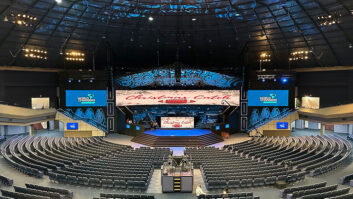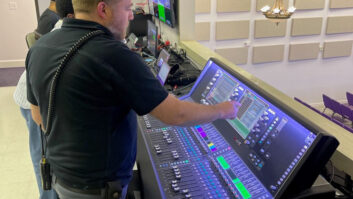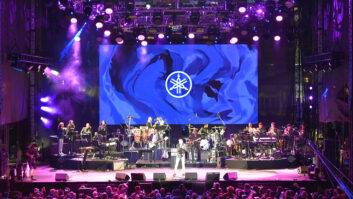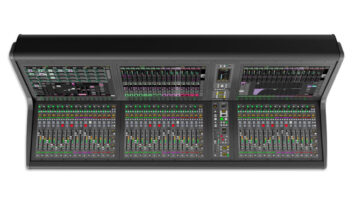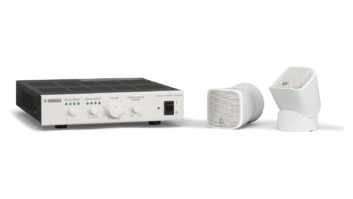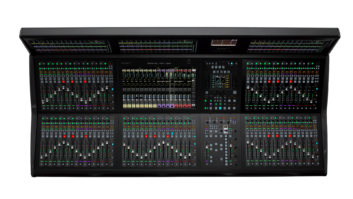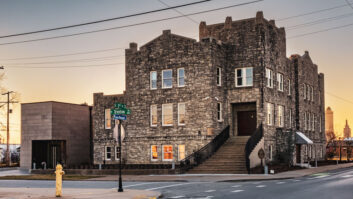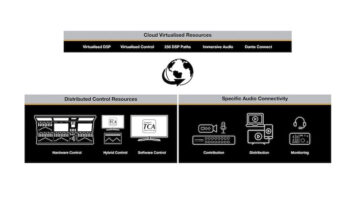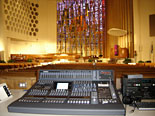
When Kirk Longhofer came on board as director of technical Ministries for First United Methodist Church of Wichita, Kan. (www.1stumc-wichita.org), he was given a seemingly simple directive: Find what’s wrong with the sound system and fix it.
The church’s diverse audio needs included not only live sound, but recording, tape duplication, and radio and live television broadcasts. The audio staff, comprising mostly volunteers, began to encounter persistent technical difficulties with the church’s 40-year-old sound system, which were compounded by the venue’s round sanctuary with a domed ceiling.
The facility, completed in 1962, features a unique circular design and a number of round rooms. The main sanctuary houses a Shantz 85-rank/four-manual pipe organ with a 32-foot Contra Bombarde—one of the largest in the Midwest. And, while weekly worship music leans toward the traditional with organ and chancel choir, it’s not uncommon for First UMC to offer blended services with jazz, Southern Gospel quartets, liturgical dance and concerts by top contemporary Christian artists.
“Architecturally and acoustically, we have the two most difficult situations,” explains Longhofer. “The original system split the sources by 65 feet and had a lot of low-quality components—basically what had been piece-mealed together as budgets became available. The speakers were shot and the older analog mixing consoles, which required manual repatching, were showing intermittent failures and other signs of old age. So for 40 years, everyone struggled with sub-par audio in the room.”
In May 2003, the technical staff began to investigate options and hired Acoustic Dimensions (Dallas) for assistance in upgrading its acoustics and providing a new system design. “This is one of those rooms where you need to retain that ‘live’ feel, yet have articulation in a sound system,” Longhofer adds.
First UMC worked with Wichita, Kansas-based A/V contractor McClelland Sound in replacing existing consoles, patchbays, mic splitters, outboard processing gear, speakers and cabling. A total of 65 inputs from the main platform are routed to a 48-channel transformer split that feeds a Yamaha DM2000 digital mixing console at front of house, a distributed hallway system and a production room with 24-track digital recording capability and a second DM2000, dedicated to mixing audio for video. The monaural P.A. system includes a center cluster comprising six EAW KF730 line array cabinets driven by Crown CTS Series amplifiers and Biamp Audia system processors.
Although the decision to install a monaural rather than an L-C-R system was a budgetary issue, the console choice was based on the consultant and technical staff’s recommendation to move the front-of-house area from the balcony to the main floor.
“I didn’t want anything less than a 40-input board,” explains Longhofer, “but with all the aux sends, outboard equipment, et cetera, that’s going to take up a lot of real estate. That began the discussion on digital consoles. I wasn’t totally convinced that it was necessary or practical for a church, especially where we depend on volunteers to do most of our mixing.
“Once I got my hands on the DM2000, my concerns about being able to teach volunteers to use it effectively went away,” Longhofer adds. “I think the training process for a new person is actually easier on a digital board than its analog equivalent. With digital, it’s a lot easier to get focused on the mix and then worry about EQ, compression and gain structure. Having a visual cue also helps people understand what it is that they’re doing: When adjusting a channel EQ, the frequency response graph on the screen shows you the actual response of the curve. When you select a frequency, you can see it sweep across the screen. So far, both the staff and the volunteers have accepted it quickly, including the folks that had some audio background and some newbies. We have one young man, for example, who mixed a service the first Sunday was the weekend after the system was installed.”
Future upgrades include new recording gear and, according to Longhofer, the possibility of digital enhancement systems for the organ to actually increase perceived reverberation time in the room. “With the line array, the articulation in the room increased dramatically,” he explains. “We managed to keep almost all the energy off the walls, so we’re able to run much higher SPL levels and not really have any problems with echo or problematic reverberance.”
For more information on the Yamaha gear, please go to www.yamaha.com/proaudio.
